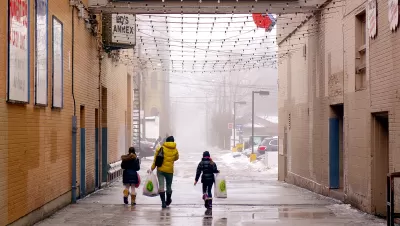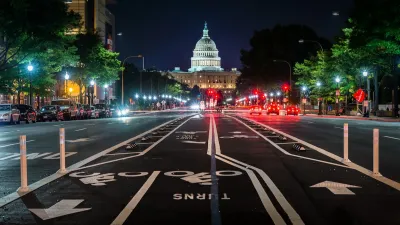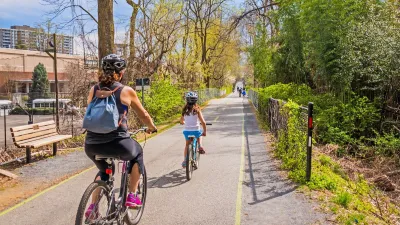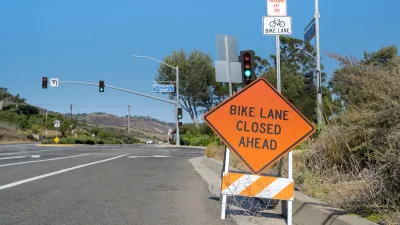A decade ago it seemed like biking and walking was making a comeback that could change the commuting culture of the United States.

Angie Schmitt spreads the word about the "Bicycling and Walking in the United States: 2018 Benchmarking Report," published semi-annually by the League of American Bicyclists.
"Pedestrian fatalities are soaring and bike commuting is leveling off nationally, despite progress in some cities and states — the latest evidence that we need leadership willing to do what works and willing to stop doing what doesn’t," according to Schmitt's summary of the report.
The contemporary trends stand in contrast to the story just a decade ago, when it seemed biking was on a "steady upward trajectory," writes Schmitt. Now biking and walking have leveled off, and many of the gains in people walking to work might be a result of more people working in post-recessionary years.
There is also institutional neglect to account for infrastructure projects that support biking an walking. "The number of new biking and walking projects being started and the total funding levels have fallen since the end of the last decade, when Obama passed his stimulus bill," explains Schmitt about findings in the report.
The article includes a call for states and the federal government to step up to support local governments in funding, planning, and constructing bike and pedestrian infrastructure.
FULL STORY: Walking and Biking are Hurt by Lack of National Leadership: Report

Study: Maui’s Plan to Convert Vacation Rentals to Long-Term Housing Could Cause Nearly $1 Billion Economic Loss
The plan would reduce visitor accommodation by 25,% resulting in 1,900 jobs lost.

North Texas Transit Leaders Tout Benefits of TOD for Growing Region
At a summit focused on transit-oriented development, policymakers discussed how North Texas’ expanded light rail system can serve as a tool for economic growth.

Why Should We Subsidize Public Transportation?
Many public transit agencies face financial stress due to rising costs, declining fare revenue, and declining subsidies. Transit advocates must provide a strong business case for increasing public transit funding.

How to Make US Trains Faster
Changes to boarding platforms and a switch to electric trains could improve U.S. passenger rail service without the added cost of high-speed rail.

Columbia’s Revitalized ‘Loop’ Is a Hub for Local Entrepreneurs
A focus on small businesses is helping a commercial corridor in Columbia, Missouri thrive.

Invasive Insect Threatens Minnesota’s Ash Forests
The Emerald Ash Borer is a rapidly spreading invasive pest threatening Minnesota’s ash trees, and homeowners are encouraged to plant diverse replacement species, avoid moving ash firewood, and monitor for signs of infestation.
Urban Design for Planners 1: Software Tools
This six-course series explores essential urban design concepts using open source software and equips planners with the tools they need to participate fully in the urban design process.
Planning for Universal Design
Learn the tools for implementing Universal Design in planning regulations.
Ascent Environmental
Borough of Carlisle
Institute for Housing and Urban Development Studies (IHS)
City of Grandview
Harvard GSD Executive Education
Toledo-Lucas County Plan Commissions
Salt Lake City
NYU Wagner Graduate School of Public Service





























